LEXICOLOGY of English Language Lecturer Anna Leonidivna Smoliana

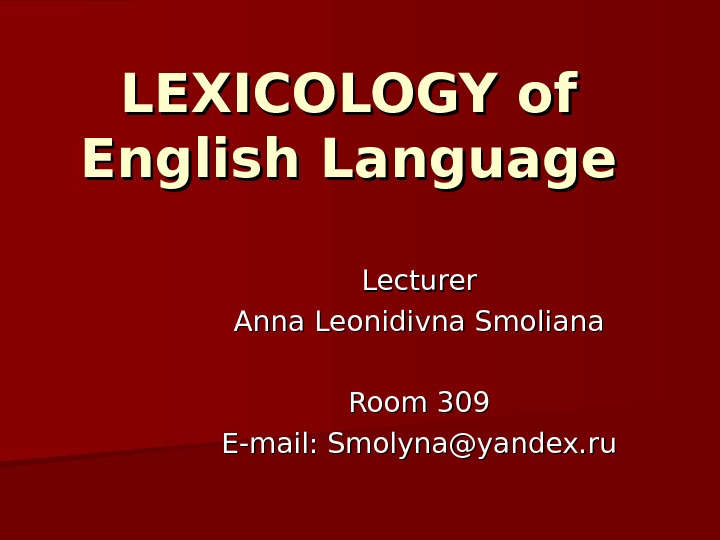
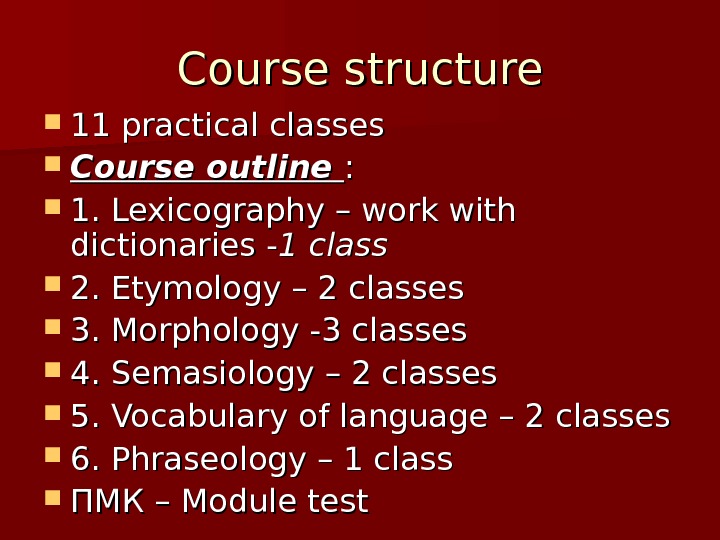
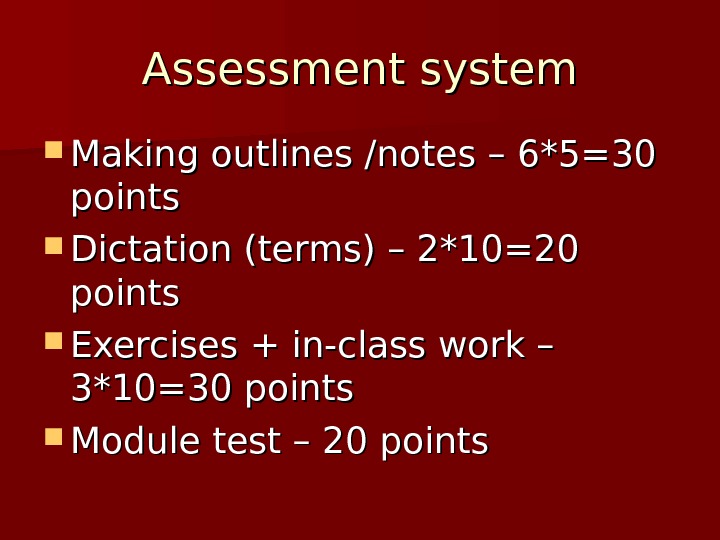
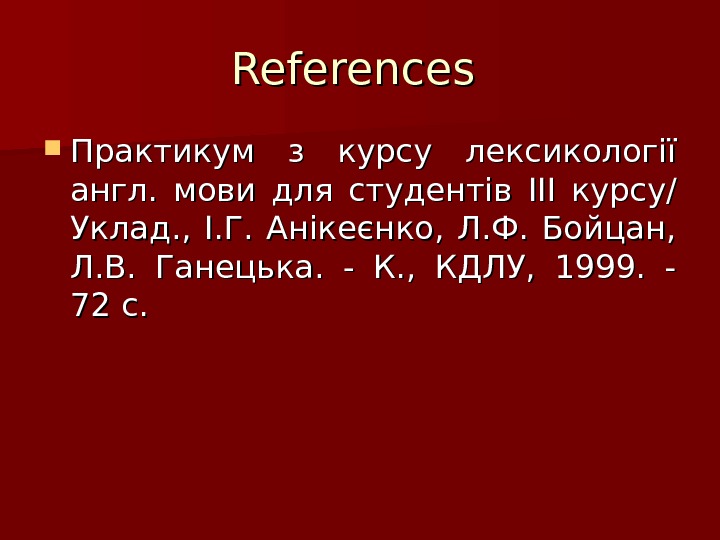
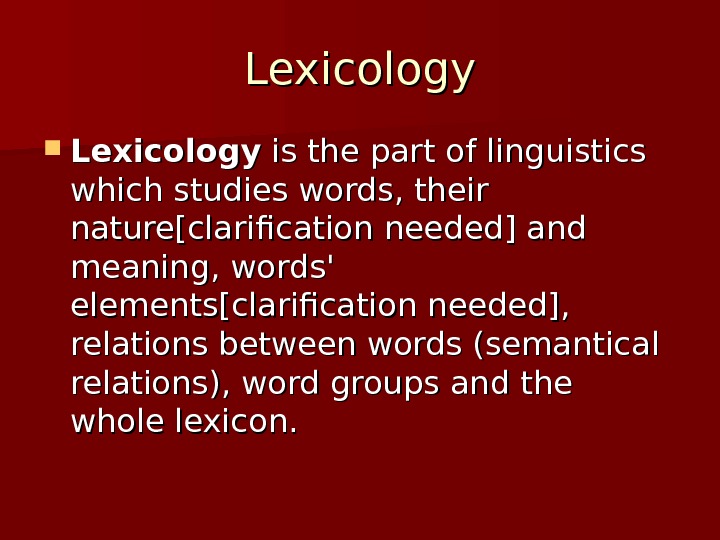
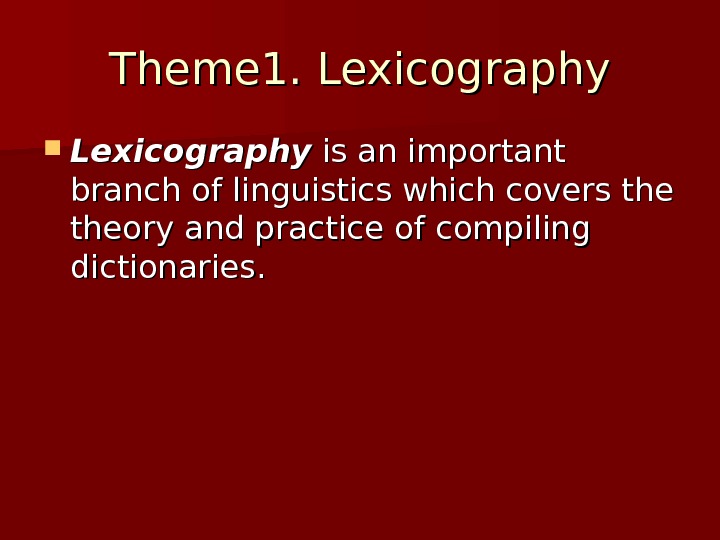

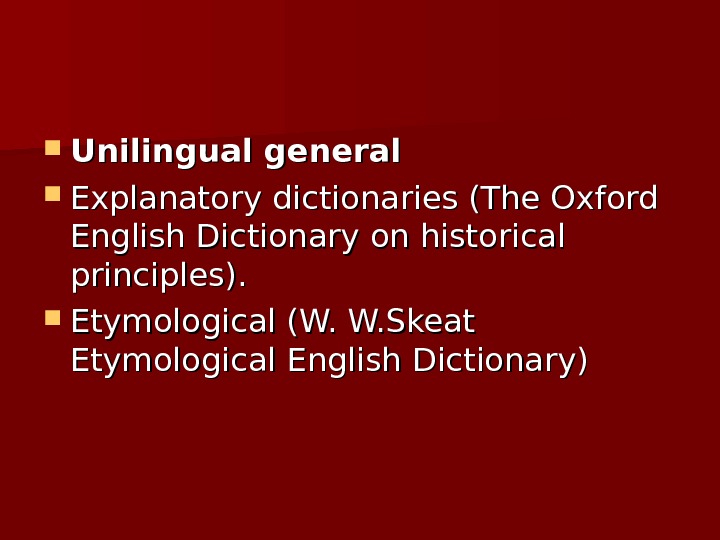
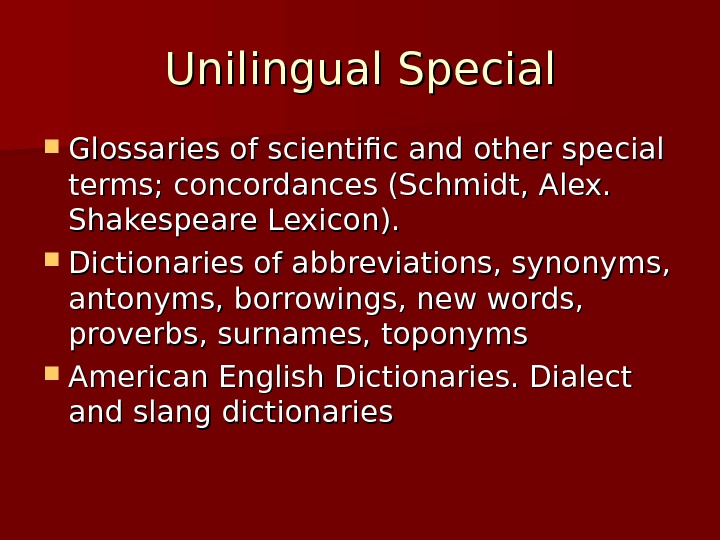
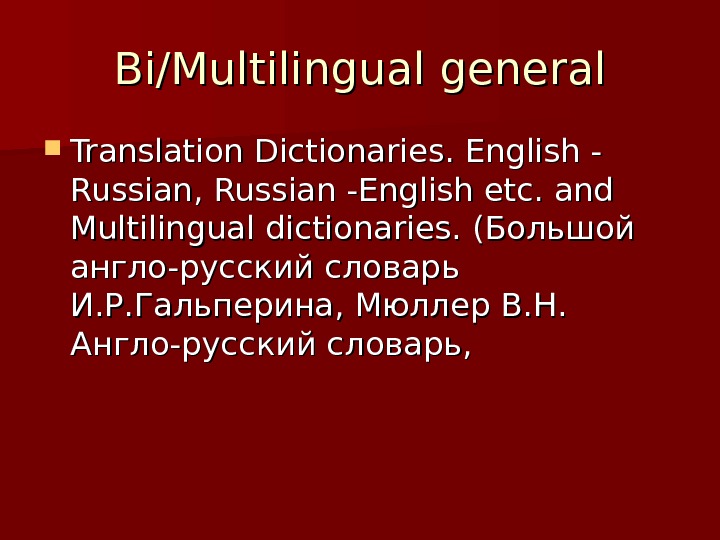
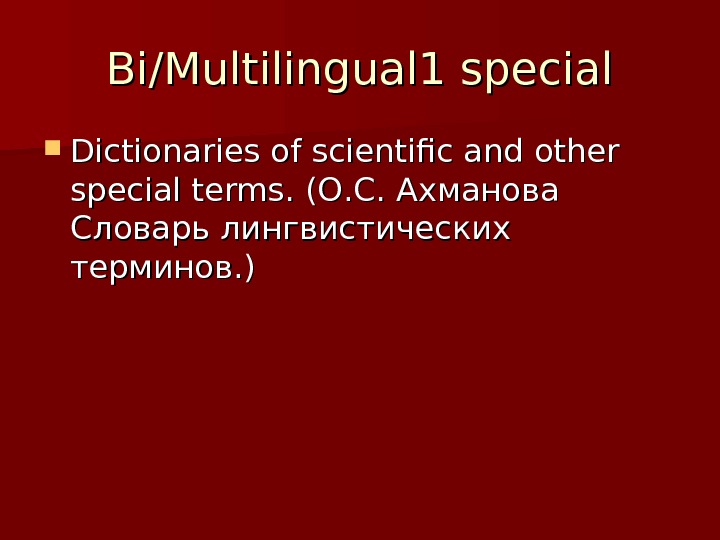
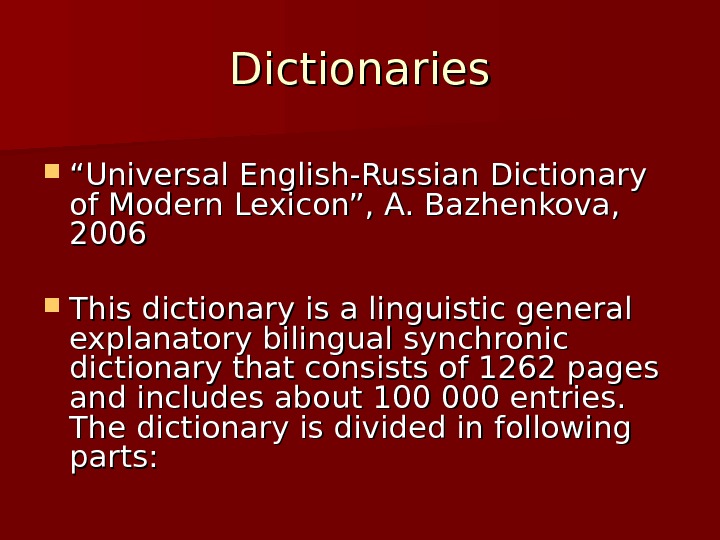
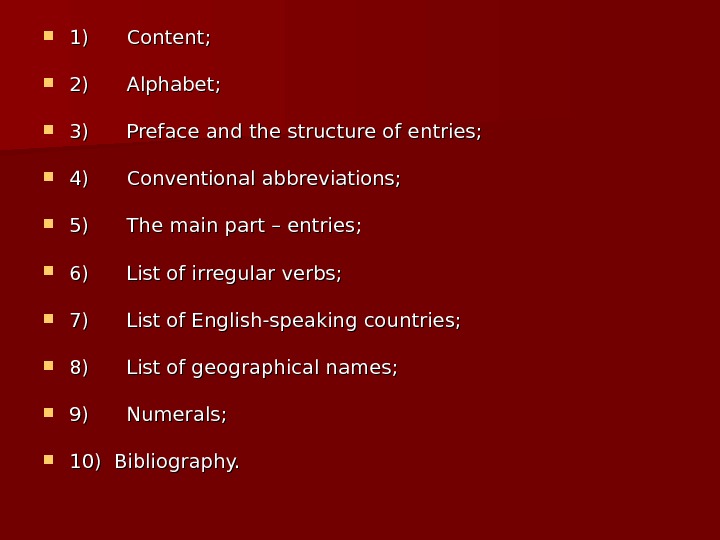
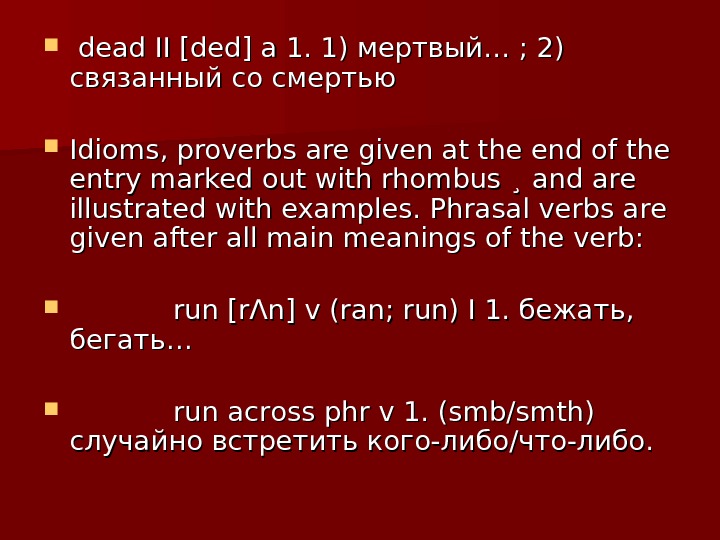
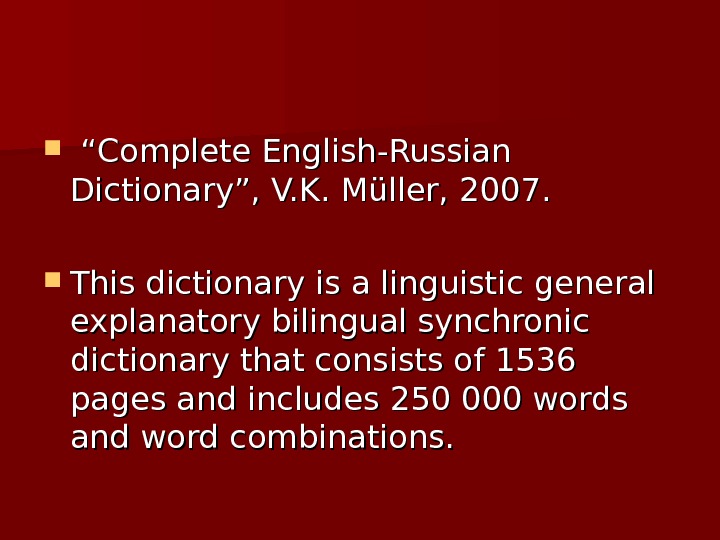
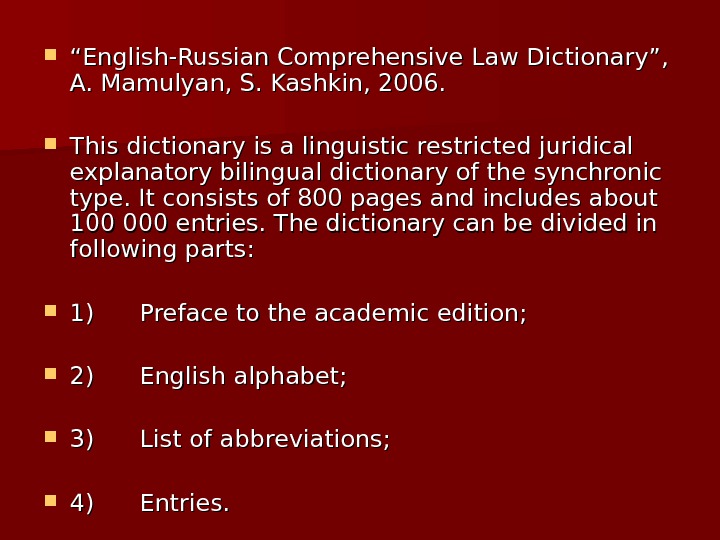
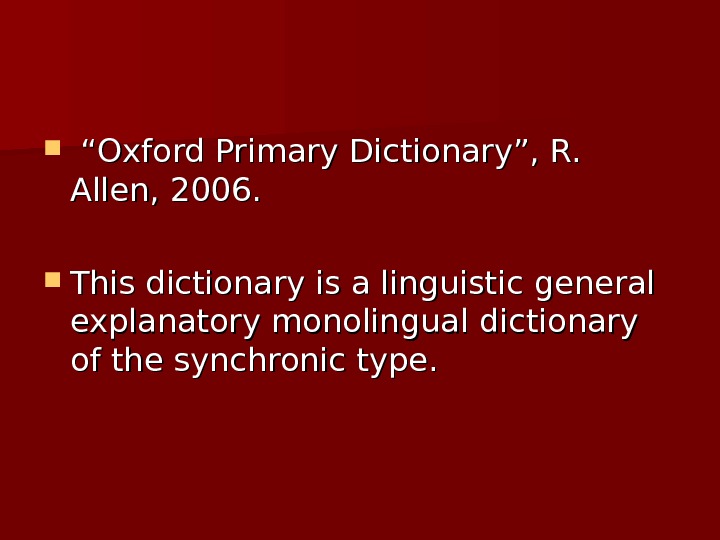
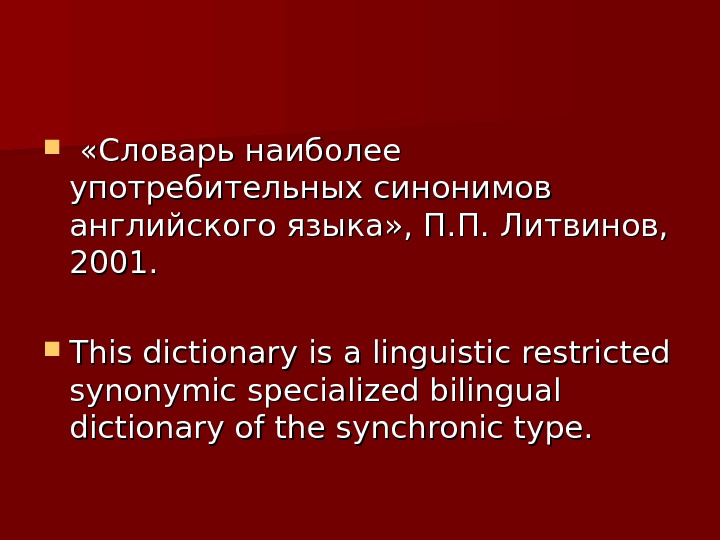

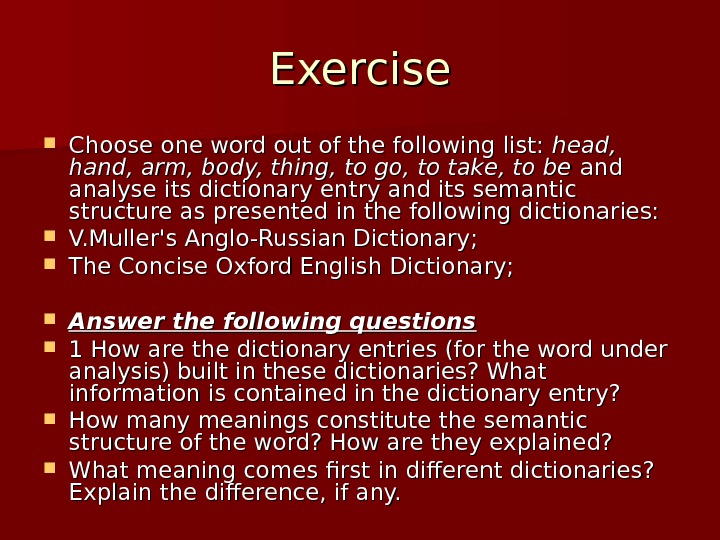
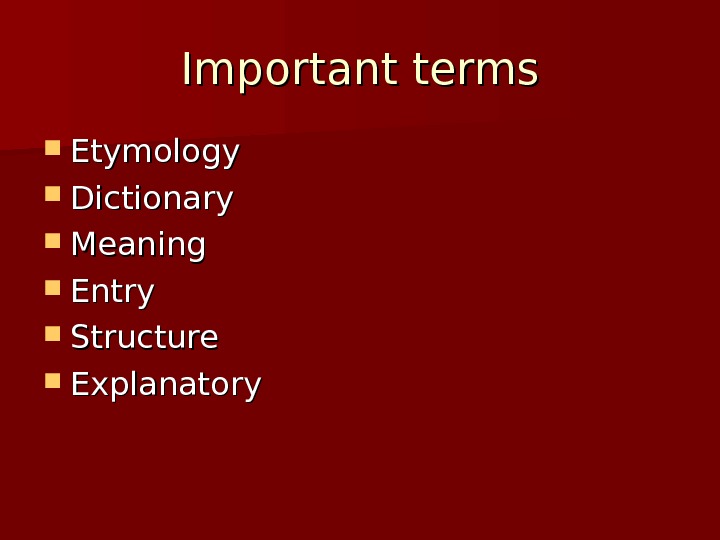
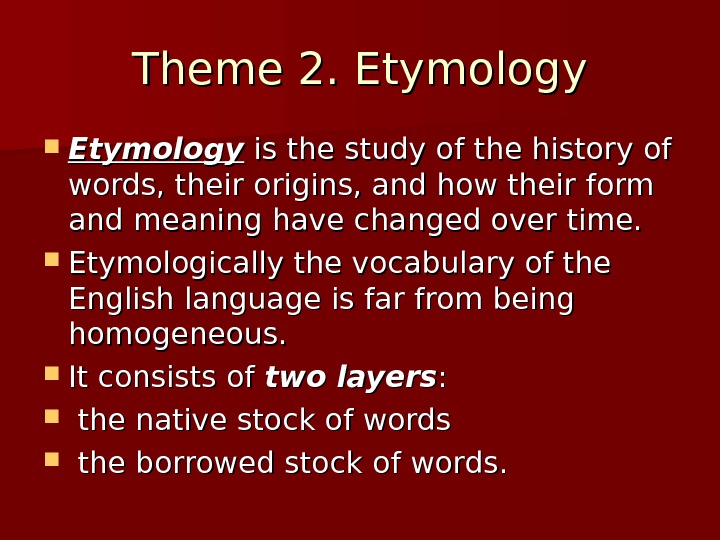
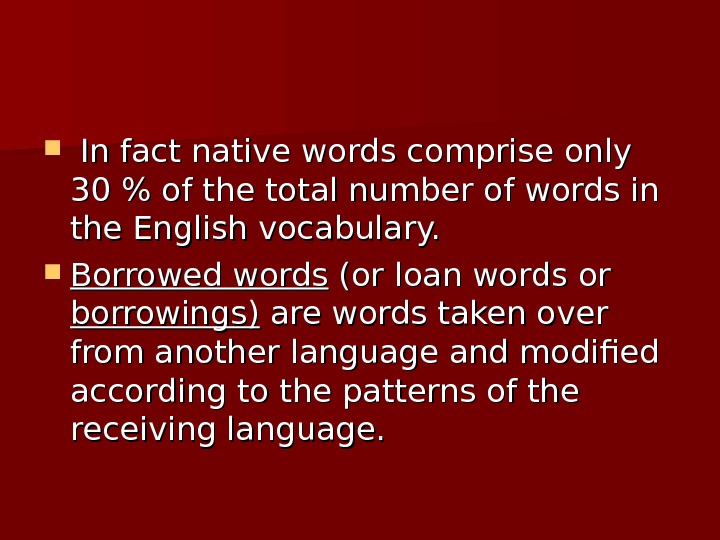
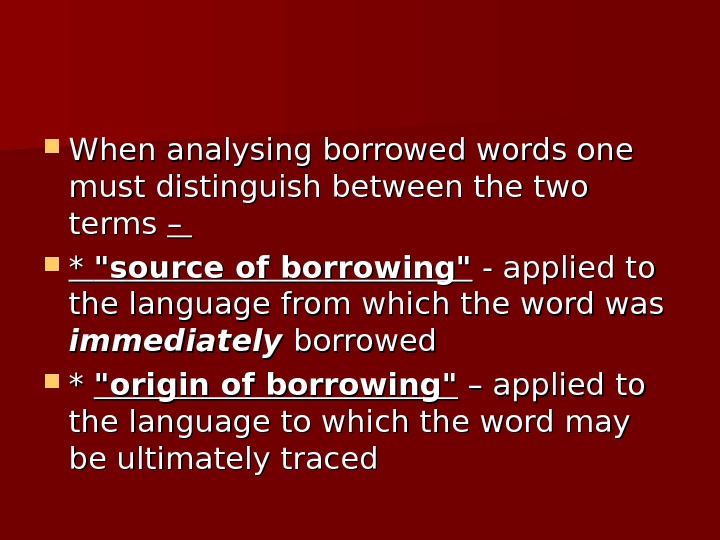
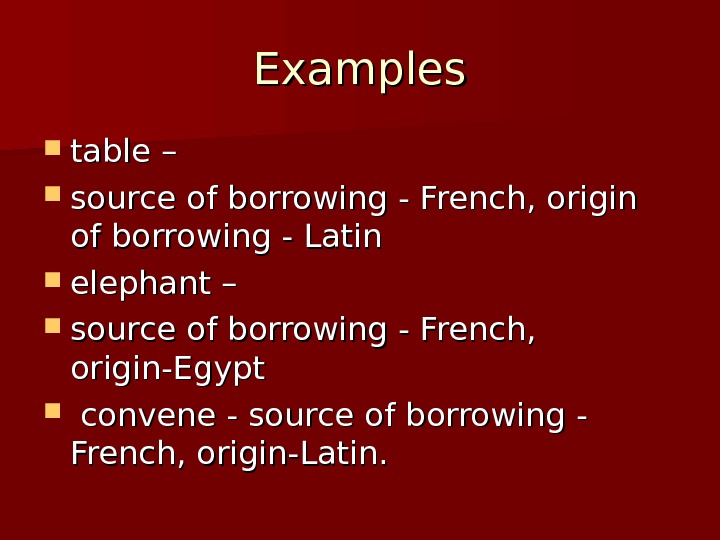

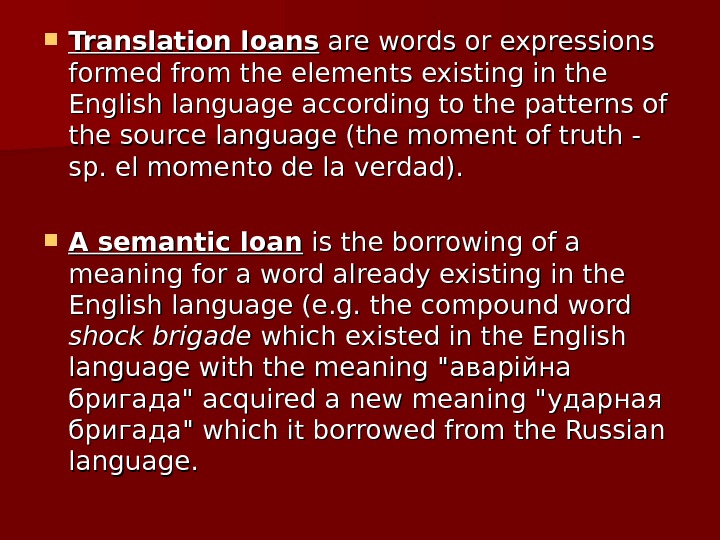
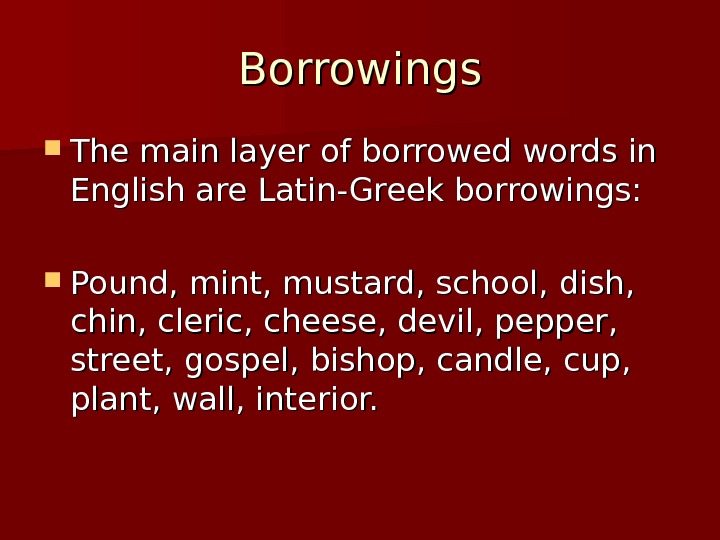
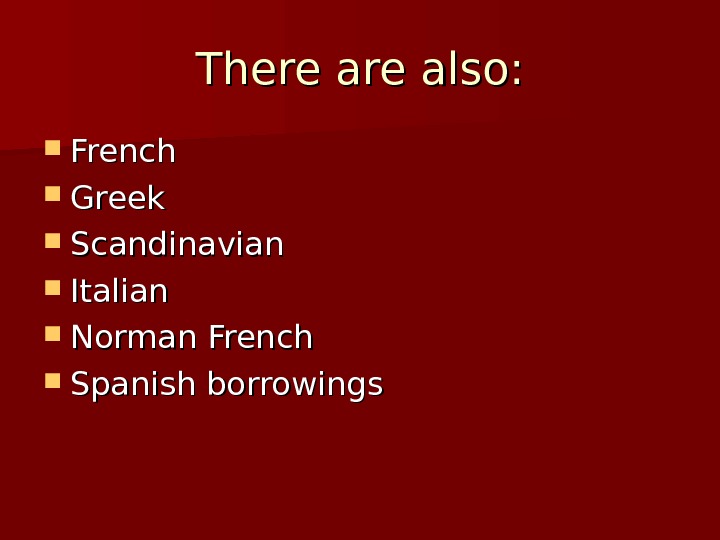
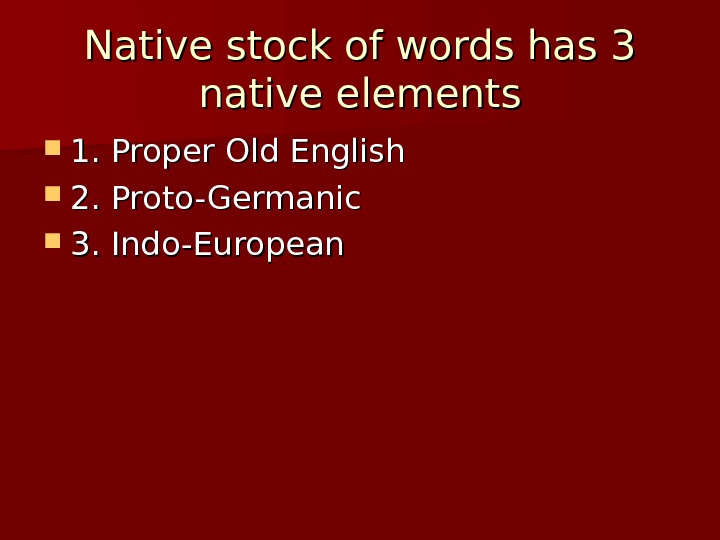
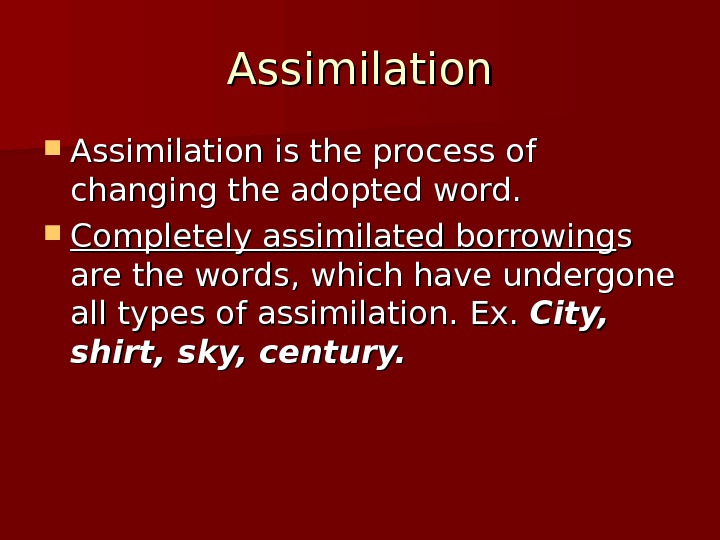
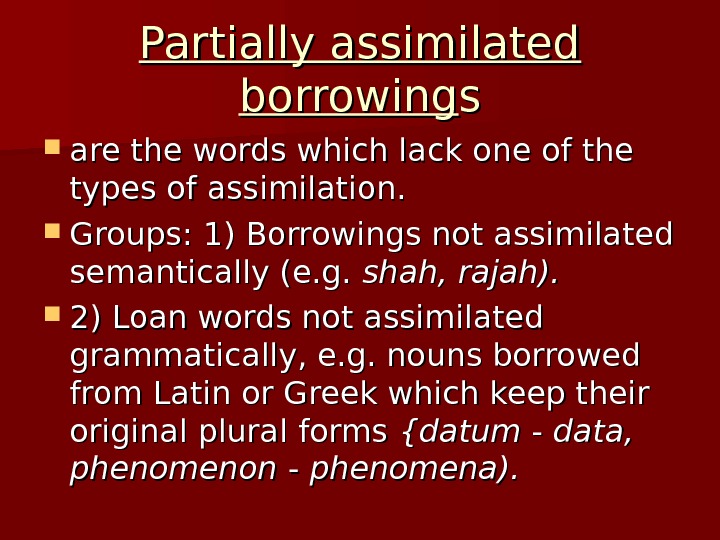
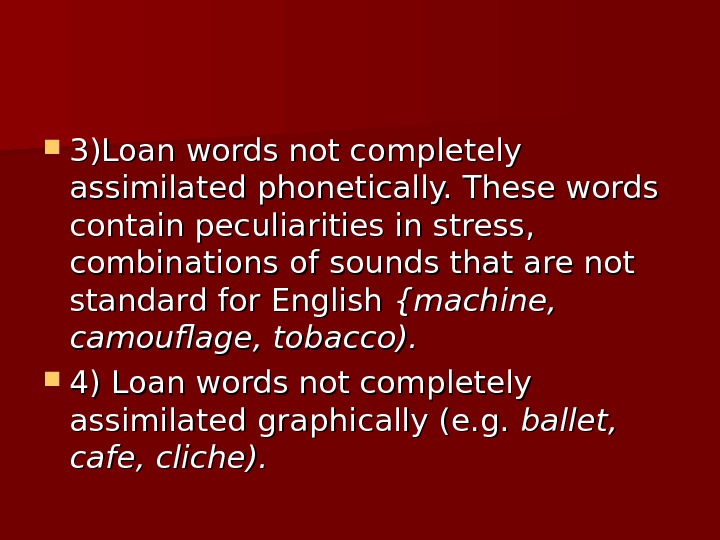
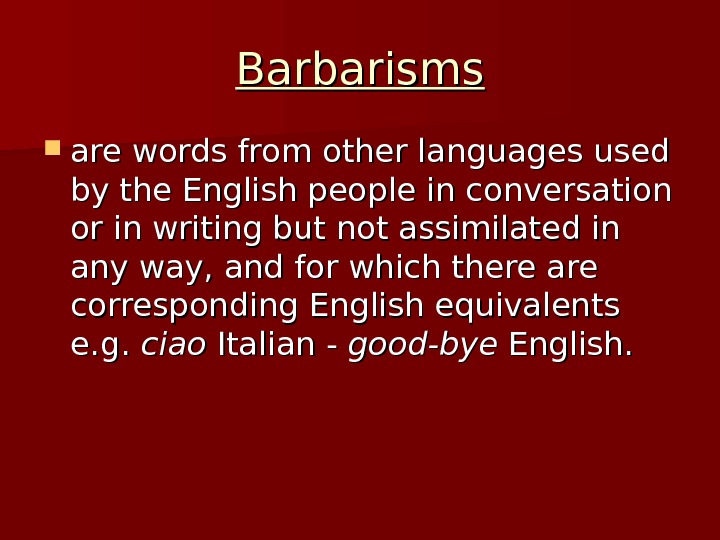

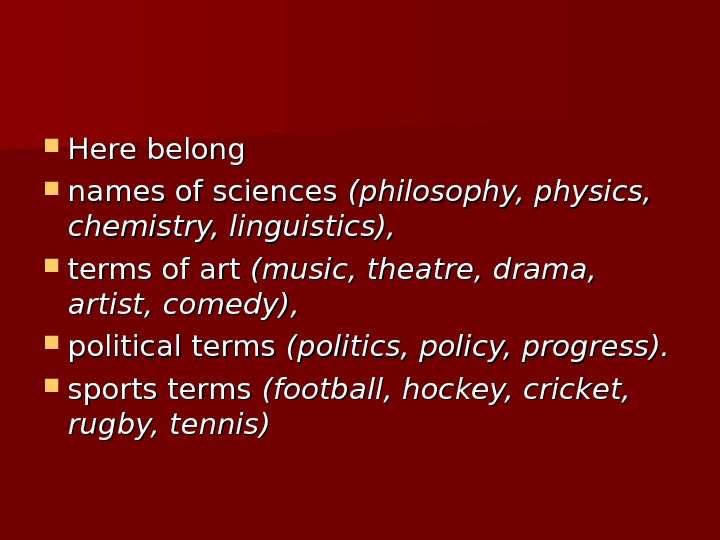
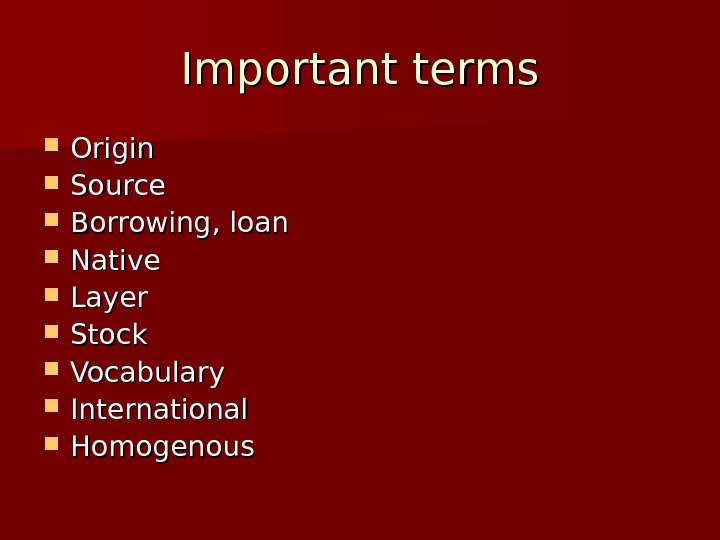
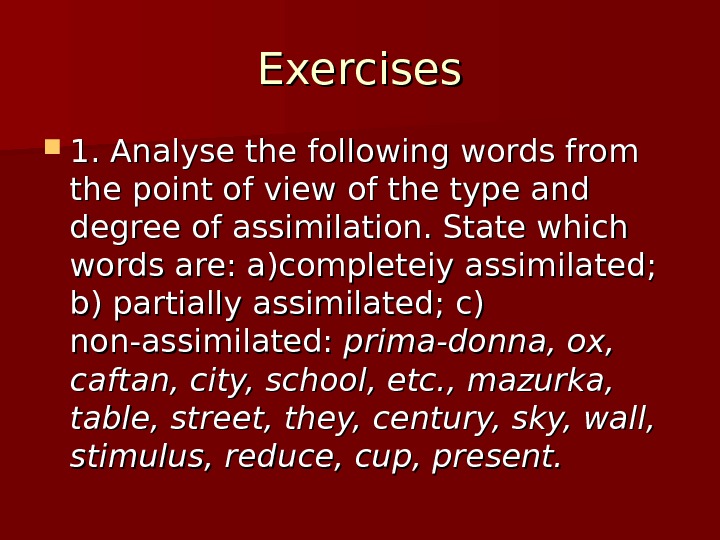
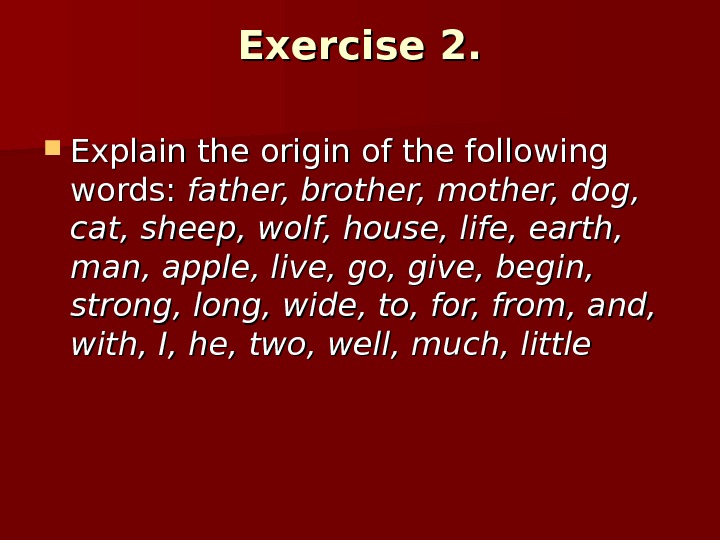
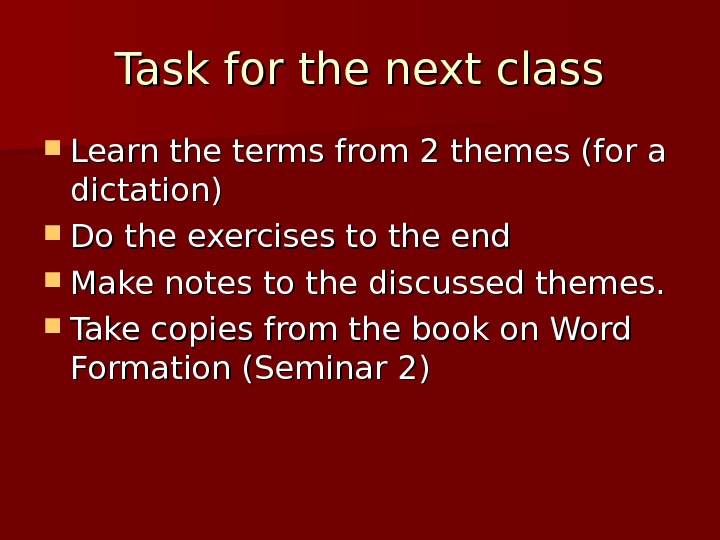
lexicology_of_english_language.ppt
- Размер: 81.5 Кб
- Количество слайдов: 40
Описание презентации LEXICOLOGY of English Language Lecturer Anna Leonidivna Smoliana по слайдам
 LEXICOLOGY of English Language Lecturer Anna Leonidivna Smoliana Room 309 E-mail: Smolyna@yandex. ru
LEXICOLOGY of English Language Lecturer Anna Leonidivna Smoliana Room 309 E-mail: Smolyna@yandex. ru
 Course structure 11 practical classes Course outline : : 1. Lexicography – work with dictionaries — 1 class 2. Etymology – 2 classes 3. Morphology -3 classes 4. Semasiology – 2 classes 5. Vocabulary of language – 2 classes 6. Phraseology – 1 class ПМК – Module test
Course structure 11 practical classes Course outline : : 1. Lexicography – work with dictionaries — 1 class 2. Etymology – 2 classes 3. Morphology -3 classes 4. Semasiology – 2 classes 5. Vocabulary of language – 2 classes 6. Phraseology – 1 class ПМК – Module test
 Assessment system Making outlines /notes – 6*5=30 points Dictation (terms) – 2*10=20 points Exercises + in-class work – 3*10=30 points Module test – 20 points
Assessment system Making outlines /notes – 6*5=30 points Dictation (terms) – 2*10=20 points Exercises + in-class work – 3*10=30 points Module test – 20 points
 References Практикум з курсу лексикології англ. мови для студентів III курсу/ Уклад. , І. Г. Анікеєнко, Л. Ф. Бойцан, Л. В. Ганецька. — К. , КДЛУ, 1999. — 72 с.
References Практикум з курсу лексикології англ. мови для студентів III курсу/ Уклад. , І. Г. Анікеєнко, Л. Ф. Бойцан, Л. В. Ганецька. — К. , КДЛУ, 1999. — 72 с.
![Lexicology is the part of linguistics which studies words, their nature[clarification needed] and meaning, words' elements[clarification Lexicology is the part of linguistics which studies words, their nature[clarification needed] and meaning, words' elements[clarification](/docs//lexicology_of_english_language_images/lexicology_of_english_language_4.jpg) Lexicology is the part of linguistics which studies words, their nature[clarification needed] and meaning, words’ elements[clarification needed], relations between words (semantical relations), word groups and the whole lexicon.
Lexicology is the part of linguistics which studies words, their nature[clarification needed] and meaning, words’ elements[clarification needed], relations between words (semantical relations), word groups and the whole lexicon.
 Theme 1. Lexicography is an important branch of linguistics which covers the theory and practice of compiling dictionaries.
Theme 1. Lexicography is an important branch of linguistics which covers the theory and practice of compiling dictionaries.
 Types of dictionaries The term dictionary is used to denote a book listing words of a language with their meanings and often with data regarding pronunciation, usage and/or origin. There are also dictionaries that concentrate their attention upon only one of these aspects: pronouncing (phonetical) dictionaries (by Daniel Jones) and etymological dictionaries (by Walter Skeat, by Erik Partridge, The Oxford English Dictionary).
Types of dictionaries The term dictionary is used to denote a book listing words of a language with their meanings and often with data regarding pronunciation, usage and/or origin. There are also dictionaries that concentrate their attention upon only one of these aspects: pronouncing (phonetical) dictionaries (by Daniel Jones) and etymological dictionaries (by Walter Skeat, by Erik Partridge, The Oxford English Dictionary).
 Unilingual general Explanatory dictionaries (The Oxford English Dictionary on historical principles). Etymological (W. W. Skeat Etymological English Dictionary)
Unilingual general Explanatory dictionaries (The Oxford English Dictionary on historical principles). Etymological (W. W. Skeat Etymological English Dictionary)
 Unilingual Special Glossaries of scientific and other special terms; concordances (Schmidt, Alex. Shakespeare Lexicon). Dictionaries of abbreviations, synonyms, antonyms, borrowings, new words, proverbs, surnames, toponyms American English Dictionaries. Dialect and slang dictionaries
Unilingual Special Glossaries of scientific and other special terms; concordances (Schmidt, Alex. Shakespeare Lexicon). Dictionaries of abbreviations, synonyms, antonyms, borrowings, new words, proverbs, surnames, toponyms American English Dictionaries. Dialect and slang dictionaries
 Bi/Multilingual general Translation Dictionaries. English — Russian, Russian -English etc. and Multilingual dictionaries. (Большой англо- pycc кий словарь И. Р. Гальперина, Мюллер В. HH. . Англо-русский словарь,
Bi/Multilingual general Translation Dictionaries. English — Russian, Russian -English etc. and Multilingual dictionaries. (Большой англо- pycc кий словарь И. Р. Гальперина, Мюллер В. HH. . Англо-русский словарь,
 Bi/Multilingual 1 special Dictionaries of scientific and other special terms. (( OO. . CC. . Ax. Ax мм aa нова Словарь лингвистических терминов. )
Bi/Multilingual 1 special Dictionaries of scientific and other special terms. (( OO. . CC. . Ax. Ax мм aa нова Словарь лингвистических терминов. )
 Dictionaries ““ Universal English-Russian Dictionary of Modern Lexicon”, A. Bazhenkova, 2006 This dictionary is a linguistic general explanatory bilingual synchronic dictionary that consists of 1262 pages and includes about 100 000 entries. The dictionary is divided in following parts:
Dictionaries ““ Universal English-Russian Dictionary of Modern Lexicon”, A. Bazhenkova, 2006 This dictionary is a linguistic general explanatory bilingual synchronic dictionary that consists of 1262 pages and includes about 100 000 entries. The dictionary is divided in following parts:
 1) Content; 2) Alphabet; 3) Preface and the structure of entries; 4) Conventional abbreviations; 5) The main part – entries; 6) List of irregular verbs; 7) List of English-speaking countries; 8) List of geographical names; 9) Numerals; 10) Bibliography.
1) Content; 2) Alphabet; 3) Preface and the structure of entries; 4) Conventional abbreviations; 5) The main part – entries; 6) List of irregular verbs; 7) List of English-speaking countries; 8) List of geographical names; 9) Numerals; 10) Bibliography.
![dead II [ded] a 1. 1) мертвый… ; 2) связанный со смертью Idioms, proverbs dead II [ded] a 1. 1) мертвый… ; 2) связанный со смертью Idioms, proverbs](/docs//lexicology_of_english_language_images/lexicology_of_english_language_13.jpg) dead II [ded] a 1. 1) мертвый… ; 2) связанный со смертью Idioms, proverbs are given at the end of the entry marked out with rhombus ¸ and are illustrated with examples. Phrasal verbs are given after all main meanings of the verb: run [rΛn] v (ran; run) I 1. бежать, бегать… run across phr v 1. (smb/smth) случайно встретить кого-либо/что-либо.
dead II [ded] a 1. 1) мертвый… ; 2) связанный со смертью Idioms, proverbs are given at the end of the entry marked out with rhombus ¸ and are illustrated with examples. Phrasal verbs are given after all main meanings of the verb: run [rΛn] v (ran; run) I 1. бежать, бегать… run across phr v 1. (smb/smth) случайно встретить кого-либо/что-либо.
 “ “ Complete English-Russian Dictionary”, V. K. Müller, 2007. This dictionary is a linguistic general explanatory bilingual synchronic dictionary that consists of 1536 pages and includes 250 000 words and word combinations.
“ “ Complete English-Russian Dictionary”, V. K. Müller, 2007. This dictionary is a linguistic general explanatory bilingual synchronic dictionary that consists of 1536 pages and includes 250 000 words and word combinations.
 ““ English-Russian Comprehensive Law Dictionary”, A. Mamulyan, S. Kashkin, 2006. This dictionary is a linguistic restricted juridical explanatory bilingual dictionary of the synchronic type. It consists of 800 pages and includes about 100 000 entries. The dictionary can be divided in following parts: 1) Preface to the academic edition; 2) English alphabet; 3) List of abbreviations; 4) Entries.
““ English-Russian Comprehensive Law Dictionary”, A. Mamulyan, S. Kashkin, 2006. This dictionary is a linguistic restricted juridical explanatory bilingual dictionary of the synchronic type. It consists of 800 pages and includes about 100 000 entries. The dictionary can be divided in following parts: 1) Preface to the academic edition; 2) English alphabet; 3) List of abbreviations; 4) Entries.
 “ “ Oxford Primary Dictionary”, R. Allen, 2006. This dictionary is a linguistic general explanatory monolingual dictionary of the synchronic type.
“ “ Oxford Primary Dictionary”, R. Allen, 2006. This dictionary is a linguistic general explanatory monolingual dictionary of the synchronic type.
 «Словарь наиболее употребительных синонимов английского языка» , П. П. Литвинов, 2001. This dictionary is a linguistic restricted synonymic specialized bilingual dictionary of the synchronic type.
«Словарь наиболее употребительных синонимов английского языка» , П. П. Литвинов, 2001. This dictionary is a linguistic restricted synonymic specialized bilingual dictionary of the synchronic type.
 My advice Dictionary. com http: //dictionary. reference. com/
My advice Dictionary. com http: //dictionary. reference. com/
 Exercise Choose one word out of the following list: head, hand, arm, body, thing, to go, to take, to be and analyse its dictionary entry and its semantic structure as presented in the following dictionaries: V. Muller’s Anglo-Russian Dictionary; The Concise Oxford English Dictionary; Answer the following questions 1 How are the dictionary entries (for the word under analysis) built in these dictionaries? What information is contained in the dictionary entry? How many meanings constitute the semantic structure of the word? How are they explained? What meaning comes first in different dictionaries? Explain the difference, if any.
Exercise Choose one word out of the following list: head, hand, arm, body, thing, to go, to take, to be and analyse its dictionary entry and its semantic structure as presented in the following dictionaries: V. Muller’s Anglo-Russian Dictionary; The Concise Oxford English Dictionary; Answer the following questions 1 How are the dictionary entries (for the word under analysis) built in these dictionaries? What information is contained in the dictionary entry? How many meanings constitute the semantic structure of the word? How are they explained? What meaning comes first in different dictionaries? Explain the difference, if any.
 Important terms Etymology Dictionary Meaning Entry Structure Explanatory
Important terms Etymology Dictionary Meaning Entry Structure Explanatory
 Theme 2. Etymology is the study of the history of words, their origins, and how their form and meaning have changed over time. Etymologically the vocabulary of the English language is far from being homogeneous. It consists of two layers : : the native stock of words the borrowed stock of words.
Theme 2. Etymology is the study of the history of words, their origins, and how their form and meaning have changed over time. Etymologically the vocabulary of the English language is far from being homogeneous. It consists of two layers : : the native stock of words the borrowed stock of words.
 In fact native words comprise only 30 % of the total number of words in the English vocabulary. Borrowed words (or loan words or borrowings) are words taken over from another language and modified according to the patterns of the receiving language.
In fact native words comprise only 30 % of the total number of words in the English vocabulary. Borrowed words (or loan words or borrowings) are words taken over from another language and modified according to the patterns of the receiving language.
 When analysing borrowed words one must distinguish between the two terms – – * * «source of borrowing» — applied to the language from which the word was immediately borrowed * * «origin of borrowing» – applied to to the language to which the word may be ultimately traced
When analysing borrowed words one must distinguish between the two terms – – * * «source of borrowing» — applied to the language from which the word was immediately borrowed * * «origin of borrowing» – applied to to the language to which the word may be ultimately traced
 Examples table – source of borrowing — French, origin of borrowing — Latin elephant – source of borrowing — French, origin-Egypt convene — source of borrowing — French, origin-Latin.
Examples table – source of borrowing — French, origin of borrowing — Latin elephant – source of borrowing — French, origin-Egypt convene — source of borrowing — French, origin-Latin.
 The are different ways of classifying the borrowed stock of words. First of all the borrowed stock of words may be classified according to the nature of the borrowing itself as borrowings proper, translation loans semantic loans.
The are different ways of classifying the borrowed stock of words. First of all the borrowed stock of words may be classified according to the nature of the borrowing itself as borrowings proper, translation loans semantic loans.
 Translation loans are words or expressions formed from the elements existing in the English language according to the patterns of the source language (the moment of truth — sp. el momento de la verdad). A semantic loan is the borrowing of a meaning for a word already existing in the English language (e. g. the compound word shock brigade which existed in the English language with the meaning » аварійна бригада» acquired a new meaning » ударная бригада » which it borrowed from the Russian language.
Translation loans are words or expressions formed from the elements existing in the English language according to the patterns of the source language (the moment of truth — sp. el momento de la verdad). A semantic loan is the borrowing of a meaning for a word already existing in the English language (e. g. the compound word shock brigade which existed in the English language with the meaning » аварійна бригада» acquired a new meaning » ударная бригада » which it borrowed from the Russian language.
 Borrowings The main layer of borrowed words in English are Latin-Greek borrowings: Pound, mint, mustard, school, dish, chin, cleric, cheese, devil, pepper, street, gospel, bishop, candle, cup, plant, wall, interior.
Borrowings The main layer of borrowed words in English are Latin-Greek borrowings: Pound, mint, mustard, school, dish, chin, cleric, cheese, devil, pepper, street, gospel, bishop, candle, cup, plant, wall, interior.
 There are also: French Greek Scandinavian Italian Norman French Spanish borrowings
There are also: French Greek Scandinavian Italian Norman French Spanish borrowings
 Native stock of words has 3 native elements 1. Proper Old English 2. Proto-Germanic 3. Indo-European
Native stock of words has 3 native elements 1. Proper Old English 2. Proto-Germanic 3. Indo-European
 Assimilation is the process of changing the adopted word. Completely assimilated borrowing s s are the words, which have undergone all types of assimilation. Ex. City, shirt, sky, century.
Assimilation is the process of changing the adopted word. Completely assimilated borrowing s s are the words, which have undergone all types of assimilation. Ex. City, shirt, sky, century.
 Partially assimilated borrowing ss are the words which lack one of the types of assimilation. Groups: 1) 1) Borrowings not assimilated semantically (e. g. shah, rajah). 2) Loan words not assimilated grammatically, e. g. nouns borrowed from Latin or Greek which keep their original plural forms {datum — — data, phenomenon — — phenomena).
Partially assimilated borrowing ss are the words which lack one of the types of assimilation. Groups: 1) 1) Borrowings not assimilated semantically (e. g. shah, rajah). 2) Loan words not assimilated grammatically, e. g. nouns borrowed from Latin or Greek which keep their original plural forms {datum — — data, phenomenon — — phenomena).
 3)Loan words not completely assimilated phonetically. These words contain peculiarities in stress, combinations of sounds that are not standard for English {machine, camouflage, tobacco). 4) 4) Loan words not completely assimilated graphically (e. g. ballet, cafe, cliche).
3)Loan words not completely assimilated phonetically. These words contain peculiarities in stress, combinations of sounds that are not standard for English {machine, camouflage, tobacco). 4) 4) Loan words not completely assimilated graphically (e. g. ballet, cafe, cliche).
 Barbarisms are words from other languages used by the English people in conversation or in writing but not assimilated in any way, and for which there are corresponding English equivalents e. g. ciao Italian — — good-bye English.
Barbarisms are words from other languages used by the English people in conversation or in writing but not assimilated in any way, and for which there are corresponding English equivalents e. g. ciao Italian — — good-bye English.
 International words. . There exist many words that were borrowed by several languages. Such words are mostly of Latin and Greek origin and convey notions which are significant in the field of communication in different countries.
International words. . There exist many words that were borrowed by several languages. Such words are mostly of Latin and Greek origin and convey notions which are significant in the field of communication in different countries.
 Here belong names of sciences (philosophy, physics, chemistry, linguistics), terms of art (music, theatre, drama, artist, comedy), political terms (politics, policy, progress). sports terms (football, hockey, cricket, rugby, tennis)
Here belong names of sciences (philosophy, physics, chemistry, linguistics), terms of art (music, theatre, drama, artist, comedy), political terms (politics, policy, progress). sports terms (football, hockey, cricket, rugby, tennis)
 Important terms Origin Source Borrowing, loan Native Layer Stock Vocabulary International Homogenous
Important terms Origin Source Borrowing, loan Native Layer Stock Vocabulary International Homogenous
 Exercises 1. Analyse the following words from the point of view of the type and degree of assimilation. State which words are: a)completeiy assimilated; b) partially assimilated; c) non-assimilated: prima-donna, ox, caftan, city, school, etc. , mazurka, table, street, they, century, sky, wall, stimulus, reduce, cup, present.
Exercises 1. Analyse the following words from the point of view of the type and degree of assimilation. State which words are: a)completeiy assimilated; b) partially assimilated; c) non-assimilated: prima-donna, ox, caftan, city, school, etc. , mazurka, table, street, they, century, sky, wall, stimulus, reduce, cup, present.
 Exercise 2. 2. Explain the origin of the following words: father, brother, mother, dog, cat, sheep, wolf, house, life, earth, man, apple, live, go, give, begin, strong, long, wide, to, for, from, and, with, I, he, two, well, much, little
Exercise 2. 2. Explain the origin of the following words: father, brother, mother, dog, cat, sheep, wolf, house, life, earth, man, apple, live, go, give, begin, strong, long, wide, to, for, from, and, with, I, he, two, well, much, little
 Task for the next class Learn the terms from 2 themes (for a dictation) Do the exercises to the end Make notes to the discussed themes. Take copies from the book on Word Formation (Seminar 2)
Task for the next class Learn the terms from 2 themes (for a dictation) Do the exercises to the end Make notes to the discussed themes. Take copies from the book on Word Formation (Seminar 2)

